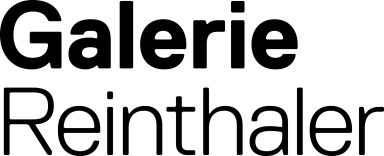Astrid Rausch
See You When I See You
A painting can be abstract or figurative, but almost every work contains zones of transition. In Astrid Rausch's work, this parallelism of figurative and completely abstract pictorial elements is an almost elementary part of her painting. Sometimes the figurative elements seem to be based primarily on our search for them. At other times, the supposedly abstract is transformed into an interplay of form and color with a convincing reference to reality. This oscillation, which also carries a narrative charge, is due to the use of color, which Astrid Rausch elevates to the real protagonist of her works. Layers of color, sometimes opaque, sometimes transparent, overlap and reveal the genesis of the image. This is determined as much by the gesture of applying the paint as by its substance and its respective aggregate states. The artist orchestrates the flow of the still liquid paint by turning the canvas and stopping the flow at the right moment. Traces running down the canvas testify to a finely balanced relationship between autonomous paint and a guiding hand. This superimposition of gesture and process, the freezing of the autonomous paint in its course, gives Astrid Rausch's works a very unique temporality and perspectivity. Ultimately, her compositions emerge from what happens on the canvas and what can be made of it.
It is really about the medium of painting and the possibilities of color as a substance. In the end, bodies are just surfaces of color, and spatiality is the result of colliding lines. The fact that pure abstraction never gains the upper hand is due to a series of subtle strategies that subtly direct the richness of associations of the color palette. Astrid Rausch counteracts the fact that abstract pictorial spaces are often perceived as landscapes with titles such as "Villa," which relate the supposed horizon lines to elementary architectural forms. Abstract color zones then meet clear directional vectors and geometric configurations without explicitly unfolding into the three-dimensional. The "ibexes" in turn take shape through their contours and dots, which can be intuitively read as eyes. Even a painting such as "Conference," which at first glance appears to be highly figurative, derives its intensity primarily from the pairs of eyes that gaze at us, transforming round forms into human physiognomies. Here, the flatness that creates space meets a slight perspectivity that develops where areas of color meet.
All of these works are characterized by an intense chromaticism, which lies atmospherically over the depicted and nuances every brushstroke. Whether subtly merging colors or contrasting opposites, an immaterial glow emerges from the depths of the layers of paint, robbing the supposed unambiguity of anything representational and opening up new spaces of perception.
The title of the exhibition - See you when I see you - has something of this search, this exchange with what supposedly looks back at us from the canvas: See you when I see you. This does not mean a recognizable reunion, but an exploration and discovery.
It is precisely the narrative openness that transforms these paintings into a field of possibilities for imaginatively charging color spaces and contours. This gives Astrid Rausch's works a generous ambiguity that speaks directly to us as viewers. Ultimately, her paintings are containers for our imagination. What unfolds before our eyes is an associative space from which color speaks in all its materiality and spectrum of meaning.
- Vanessa Joan Müller, art historian -
